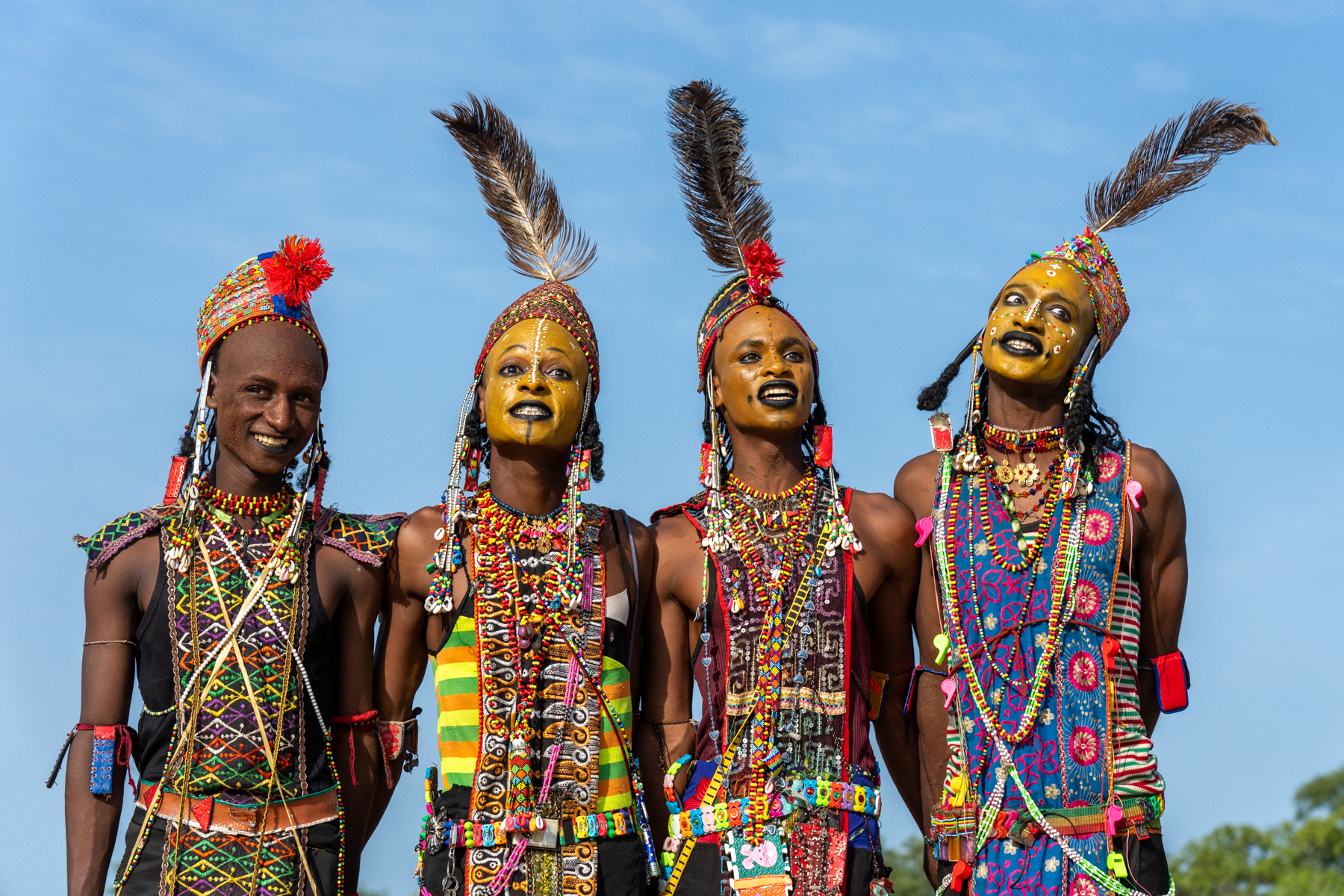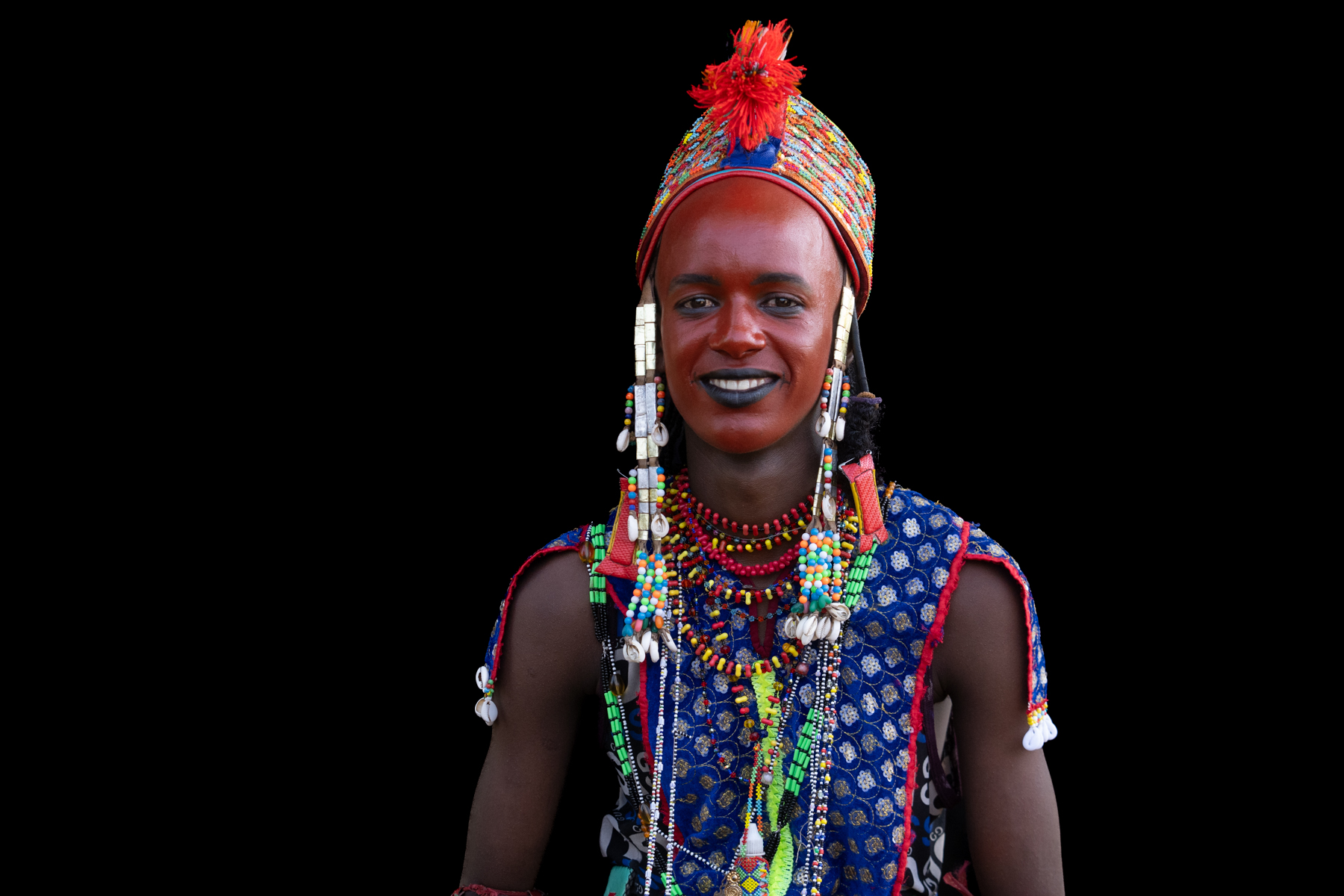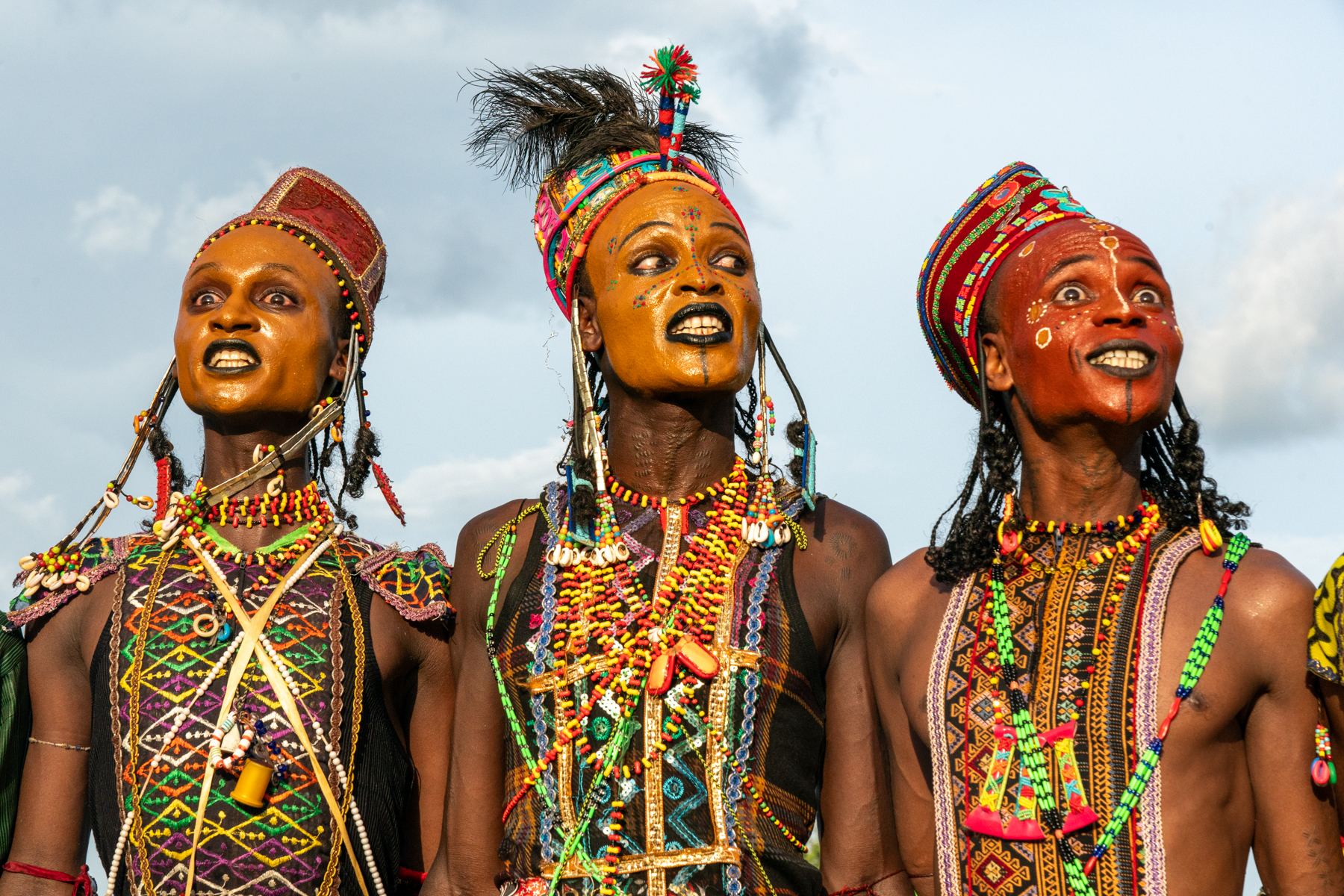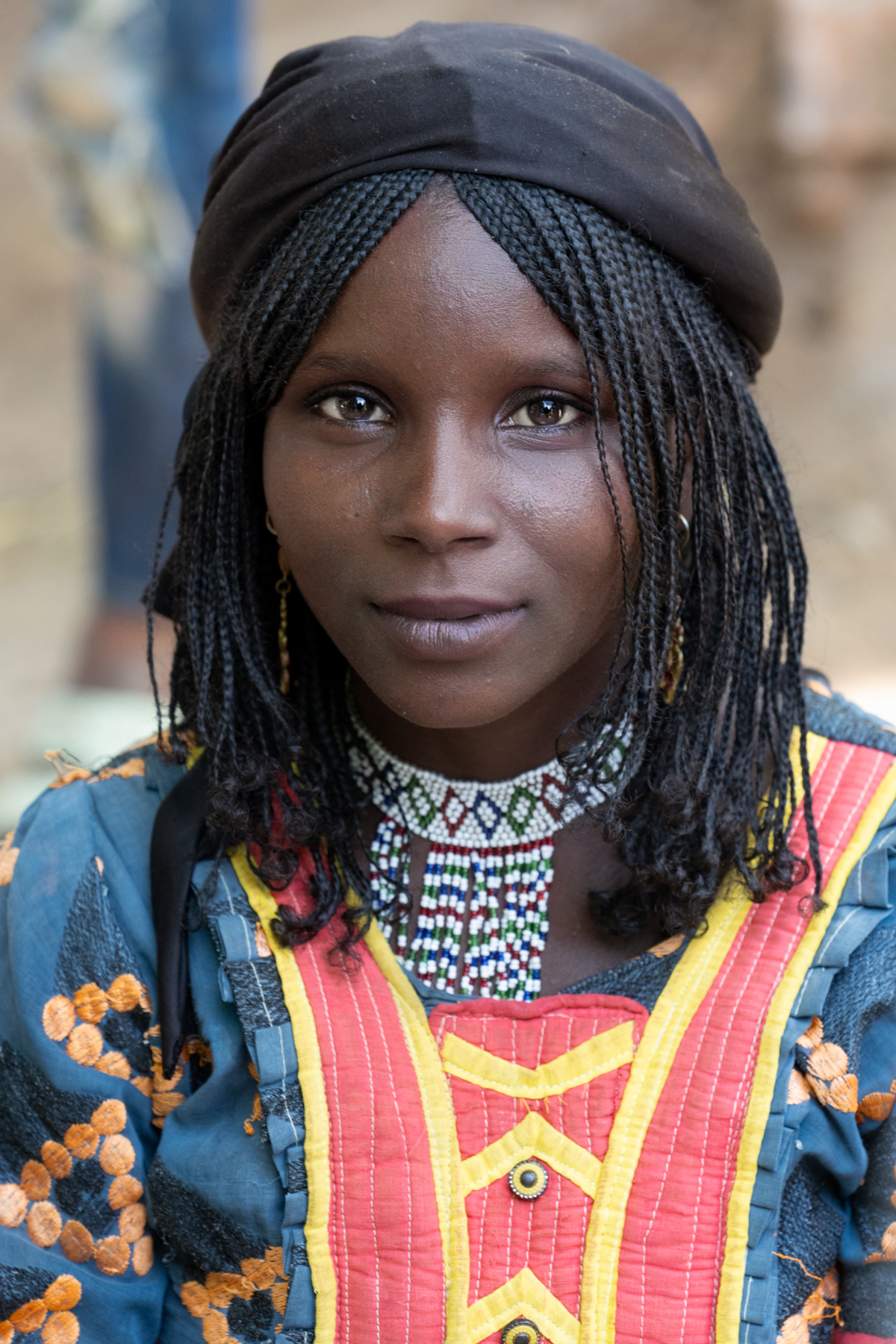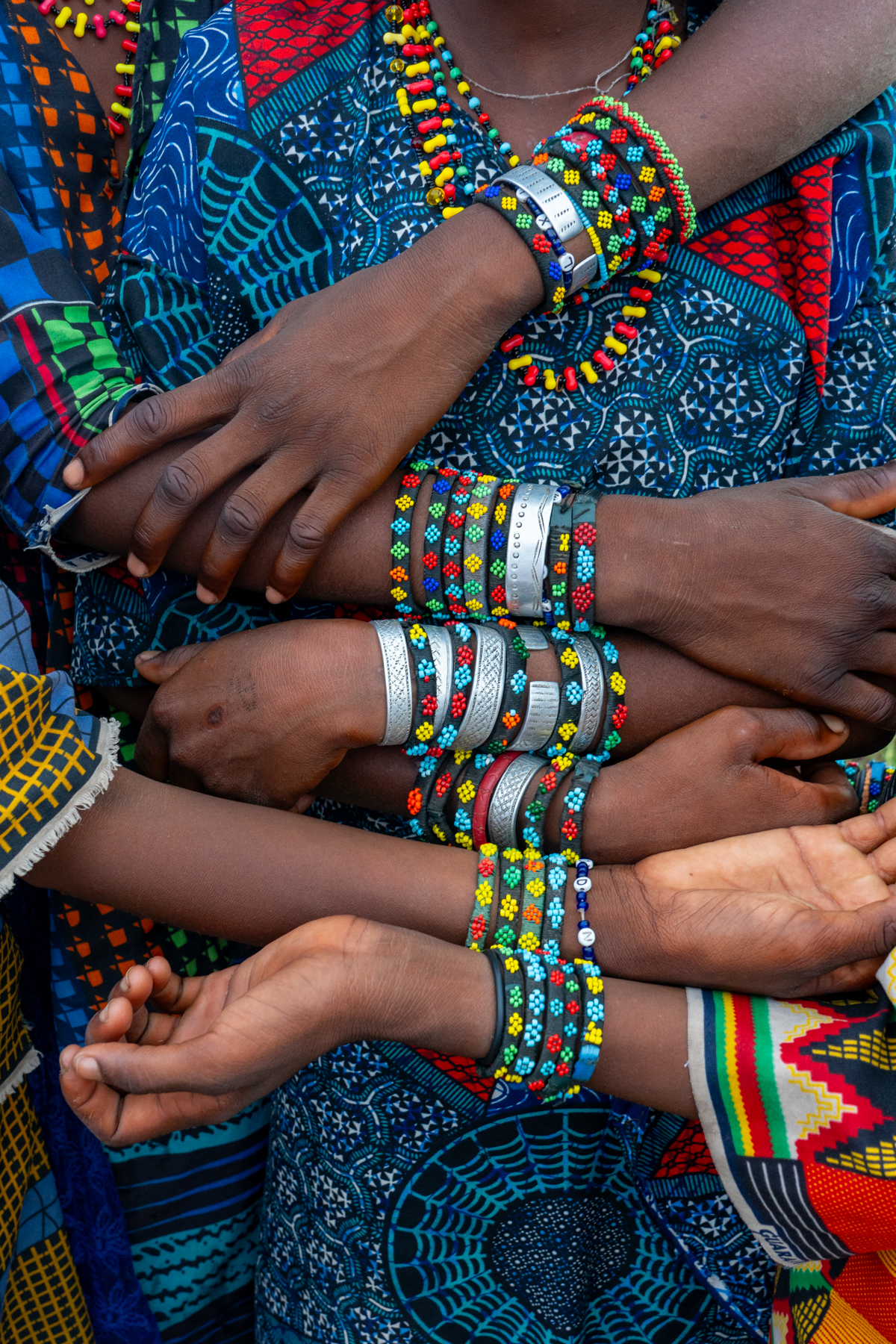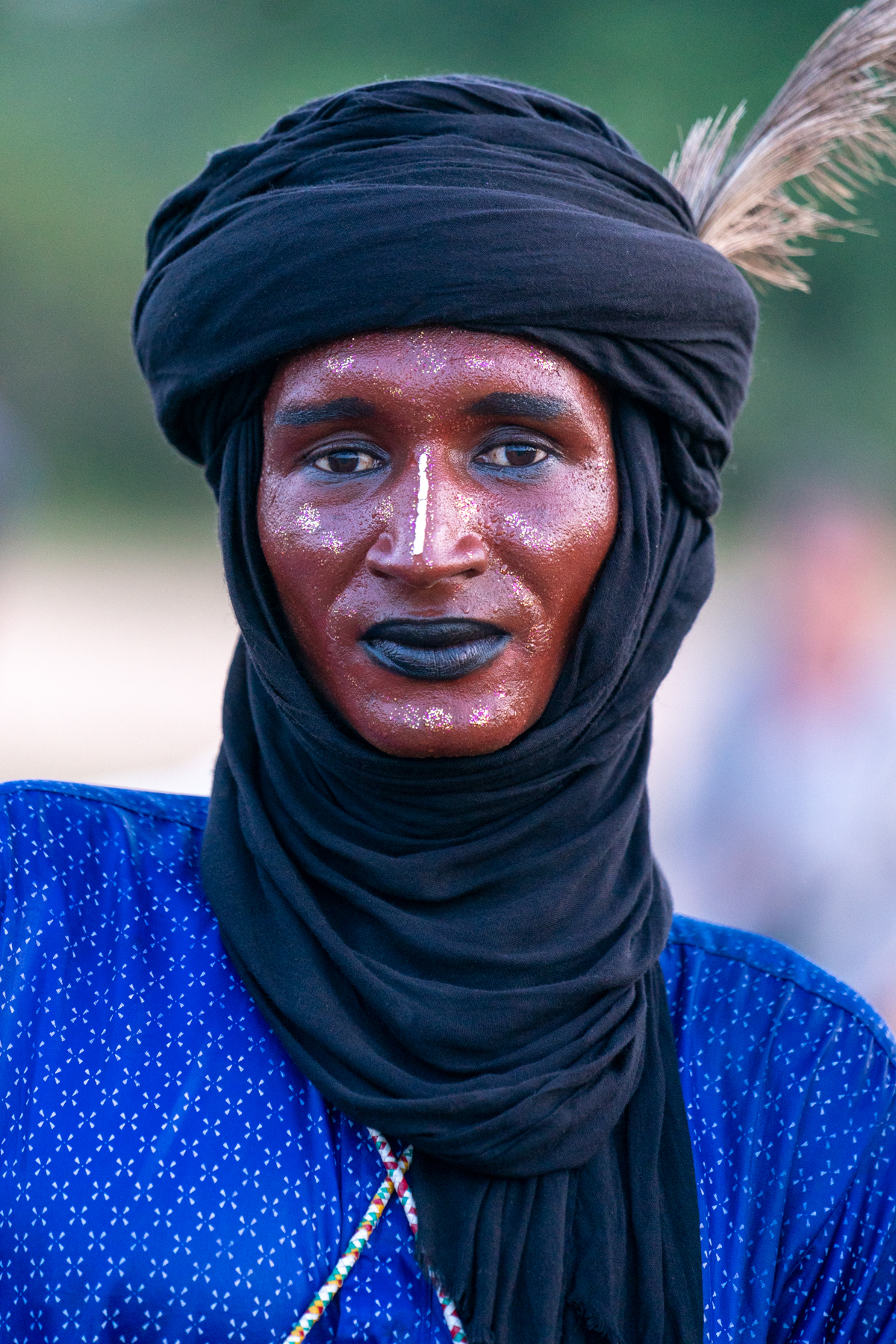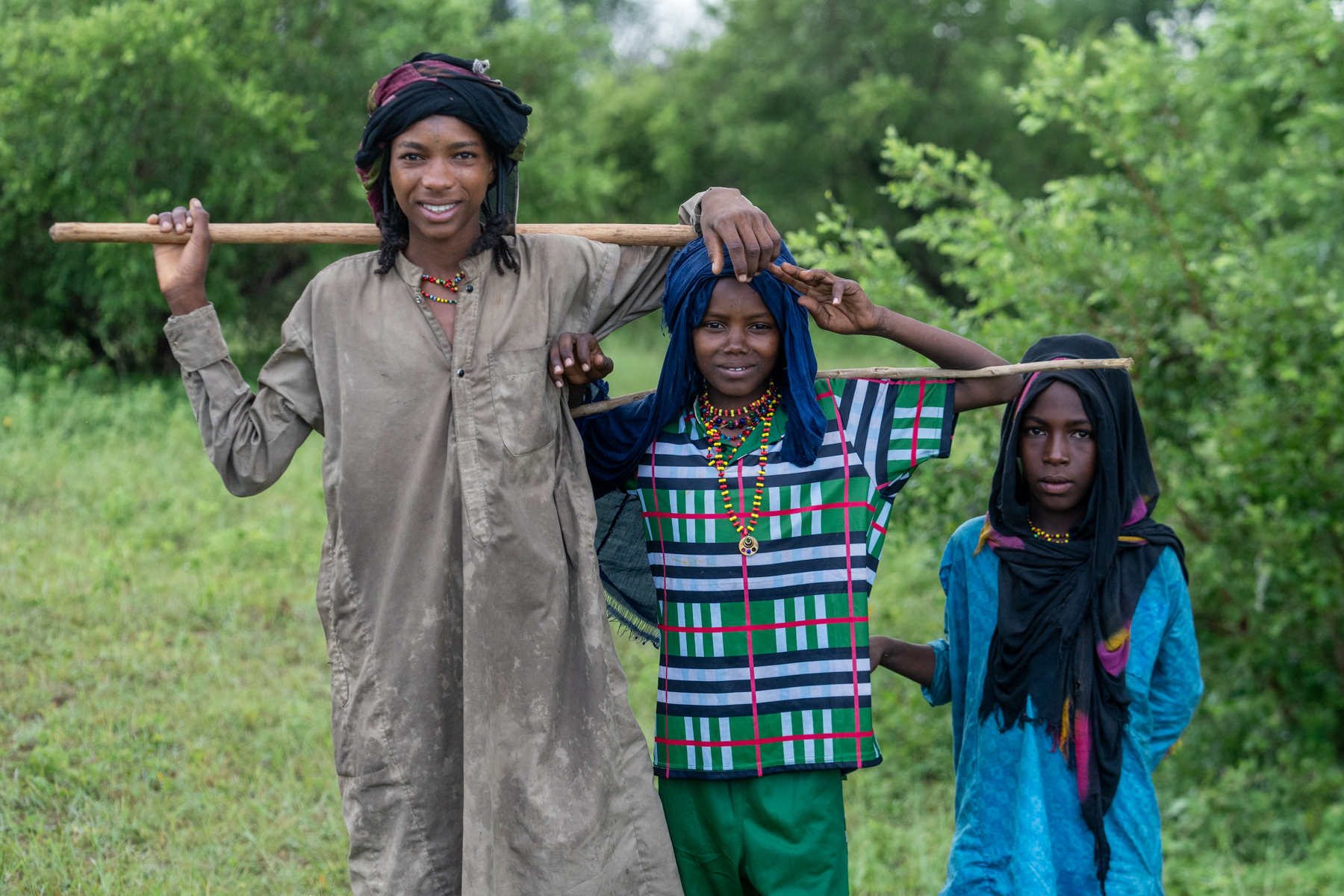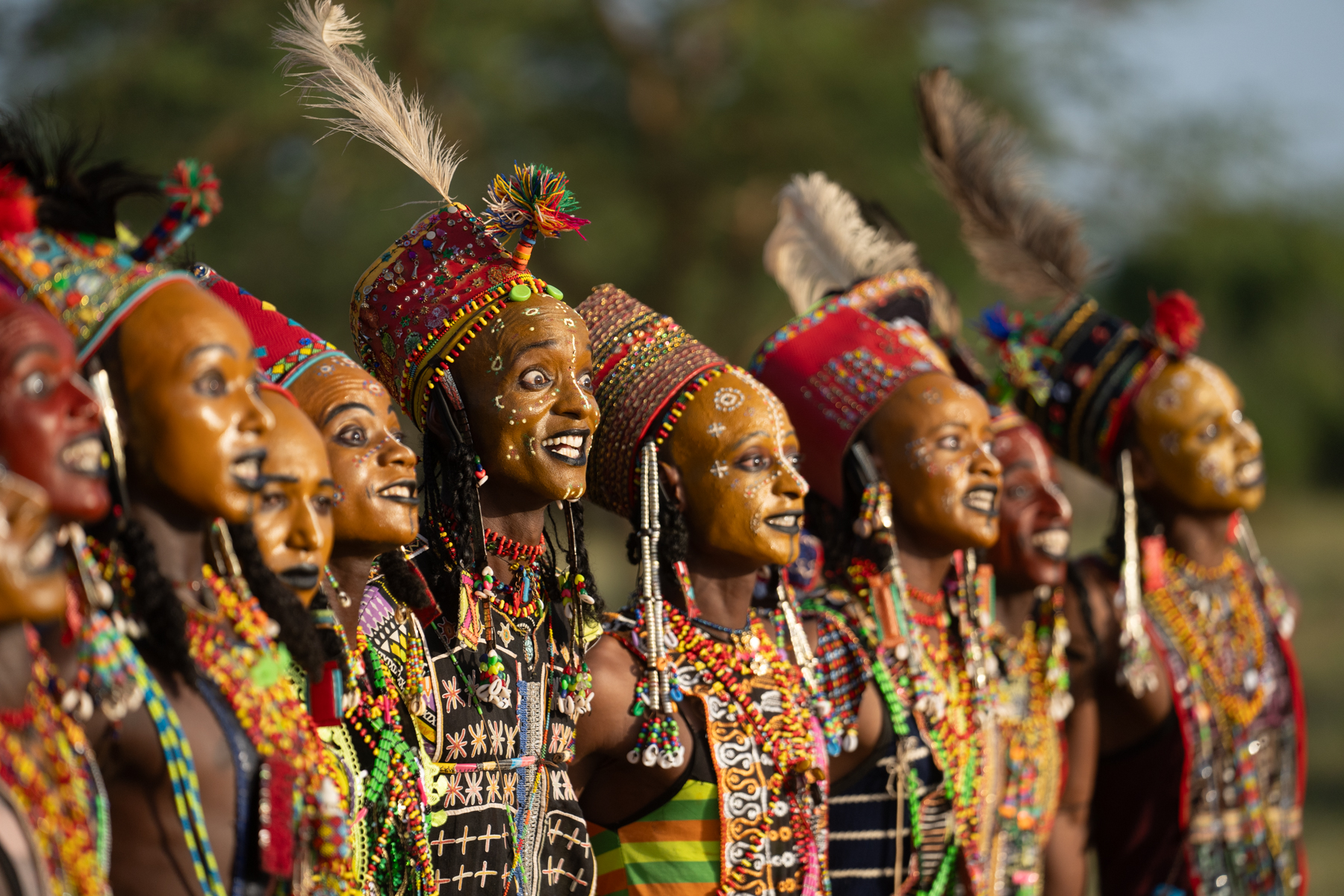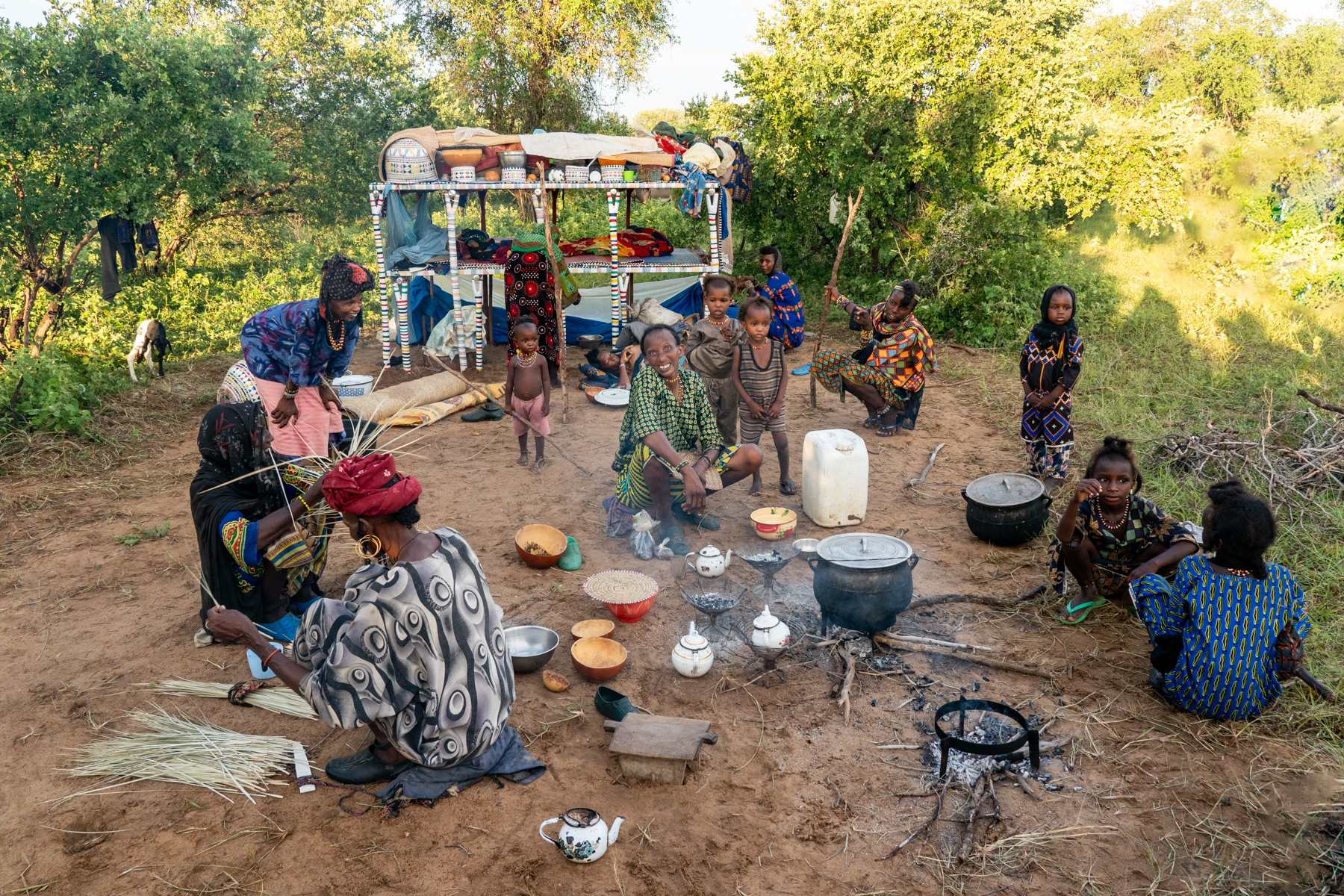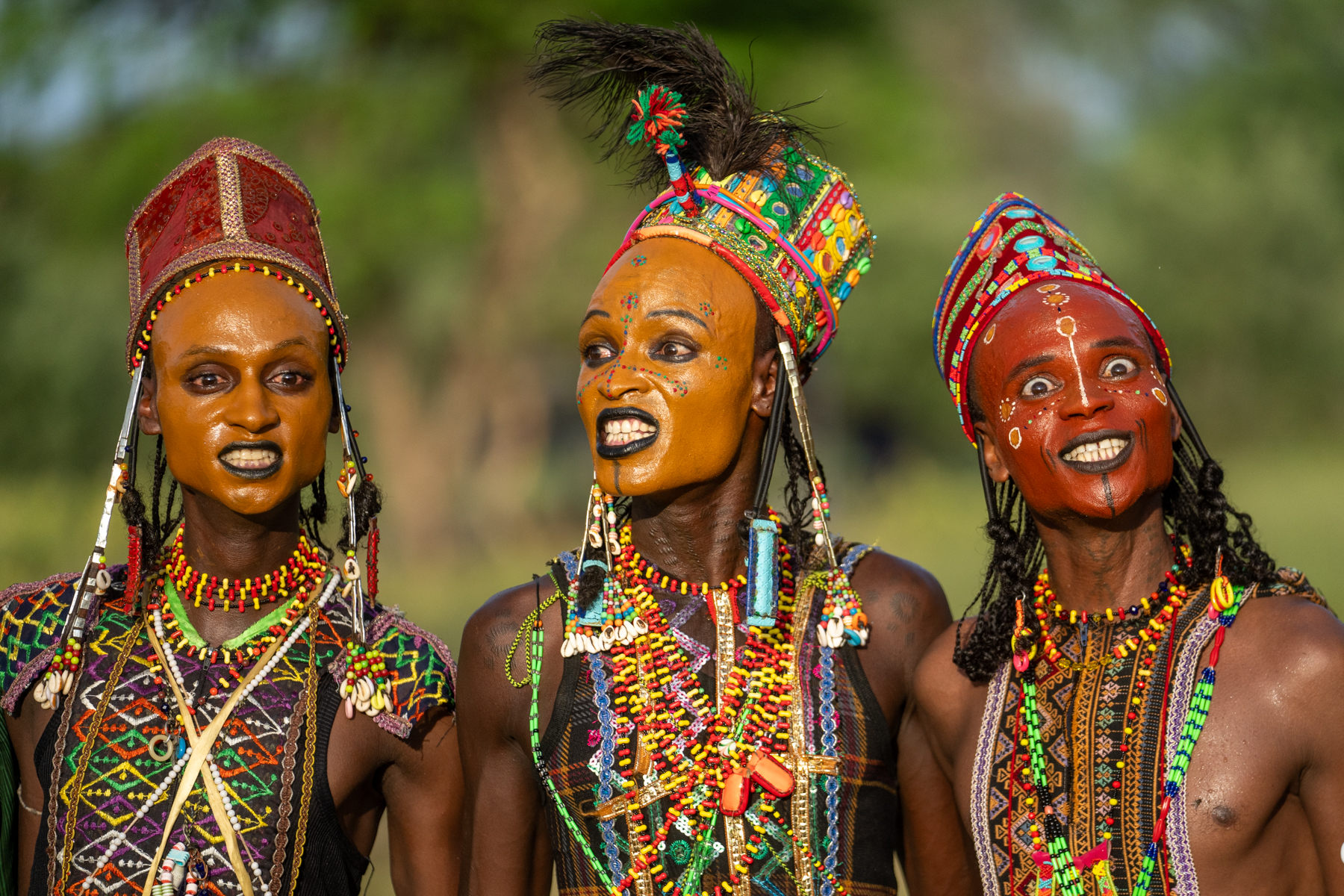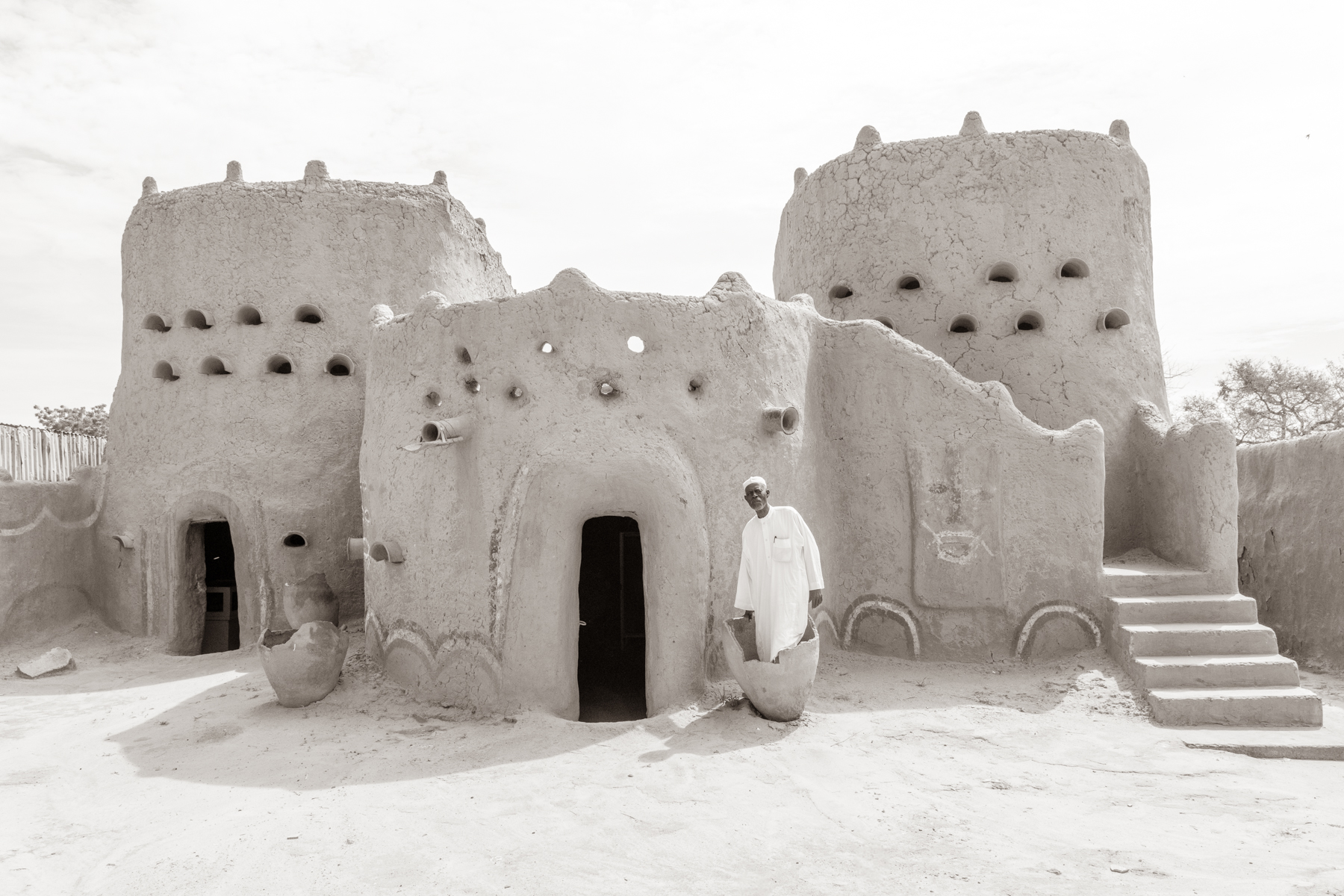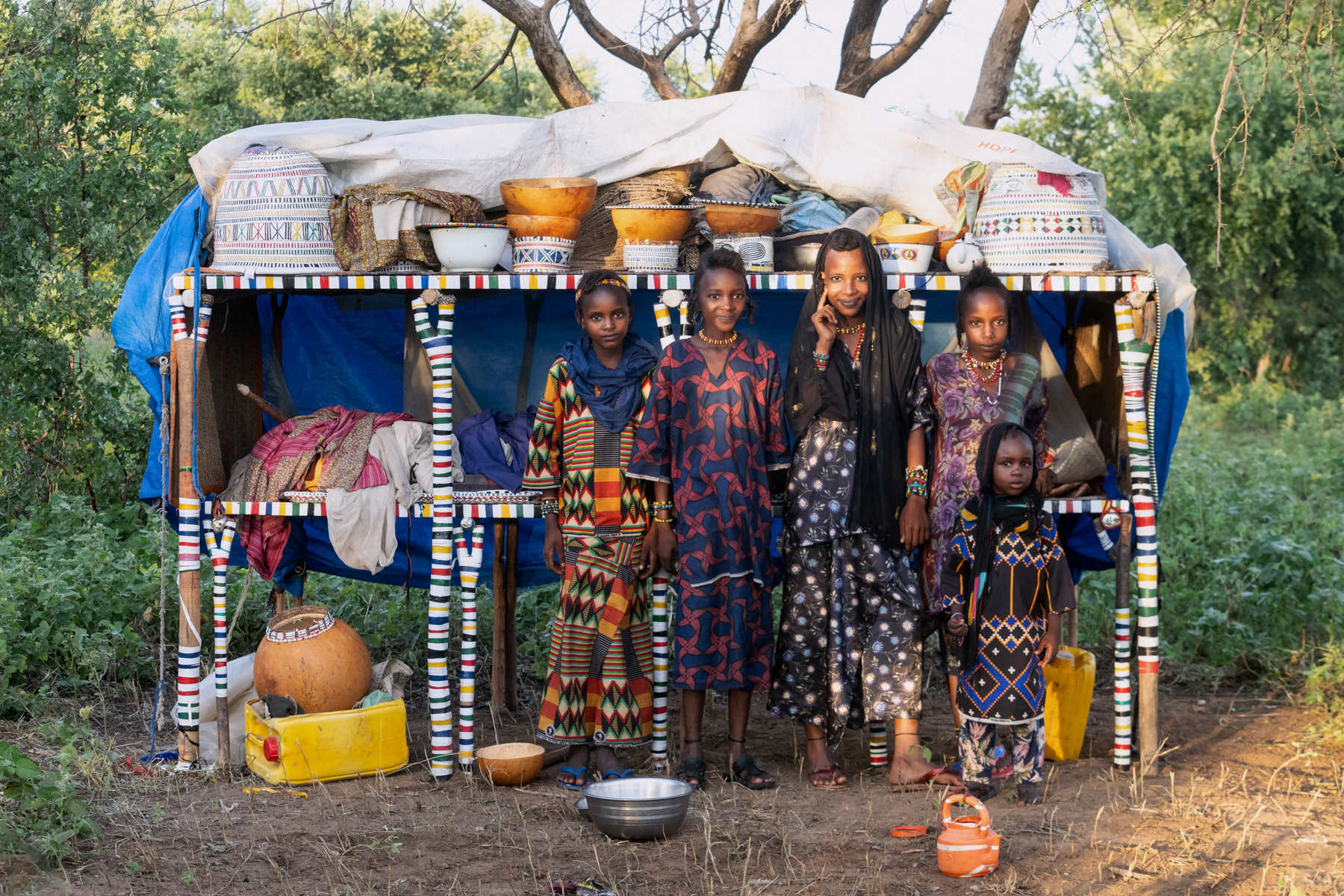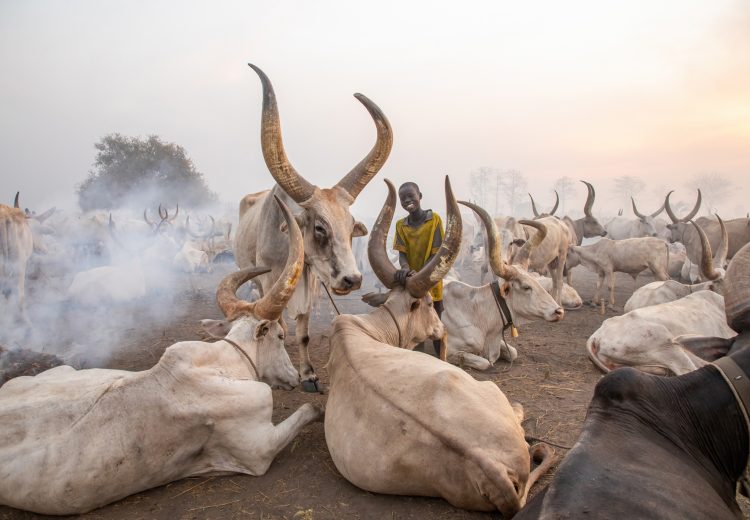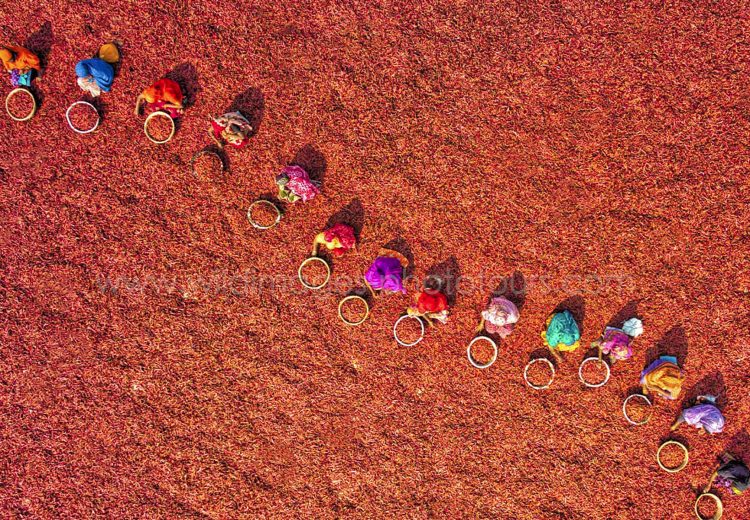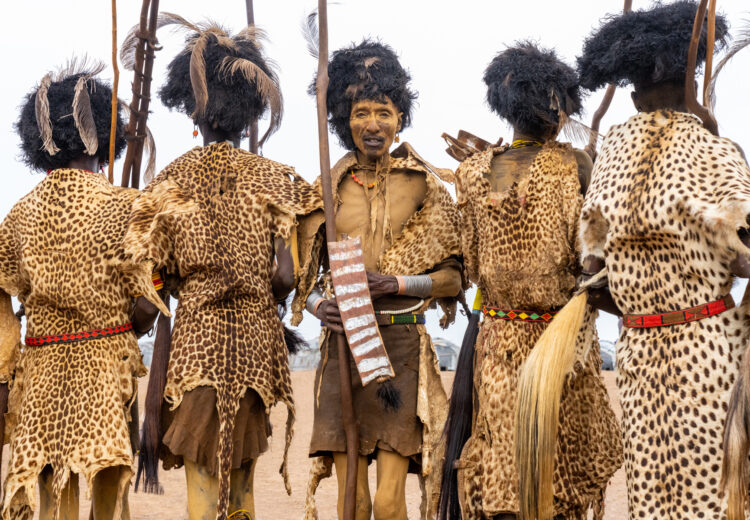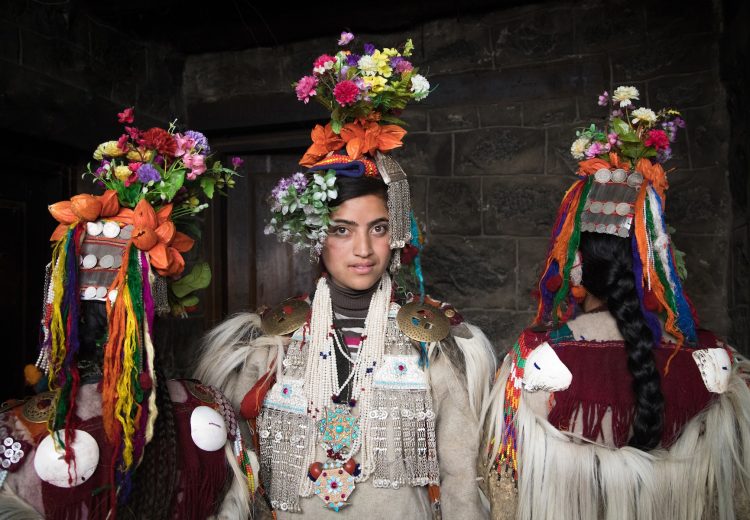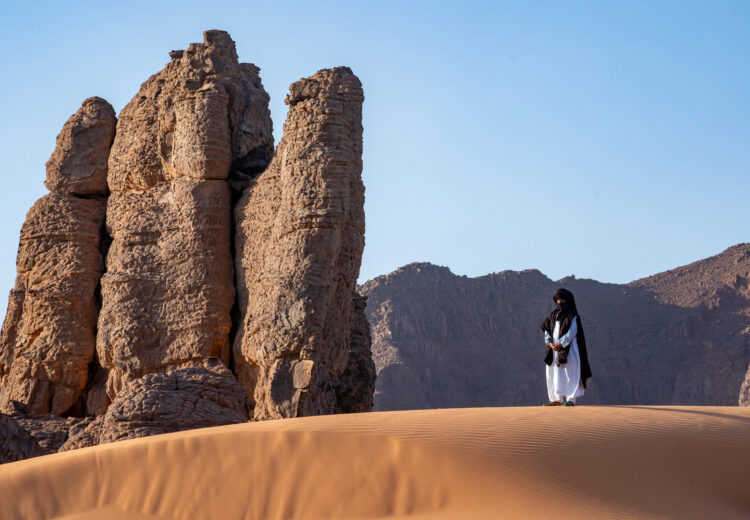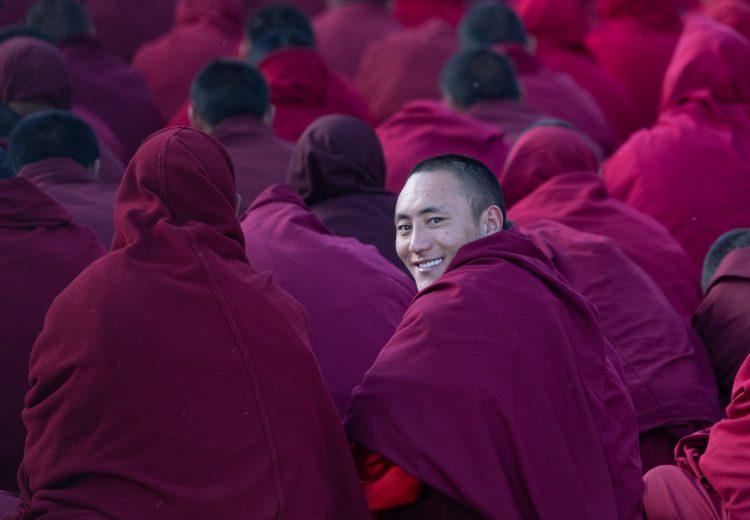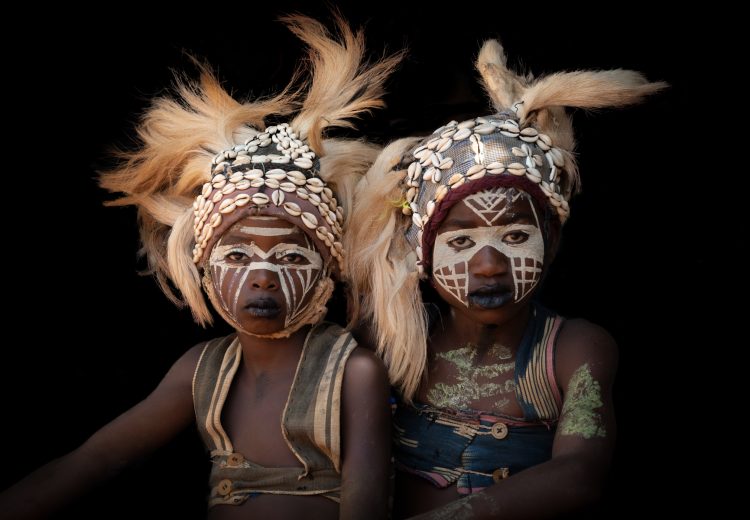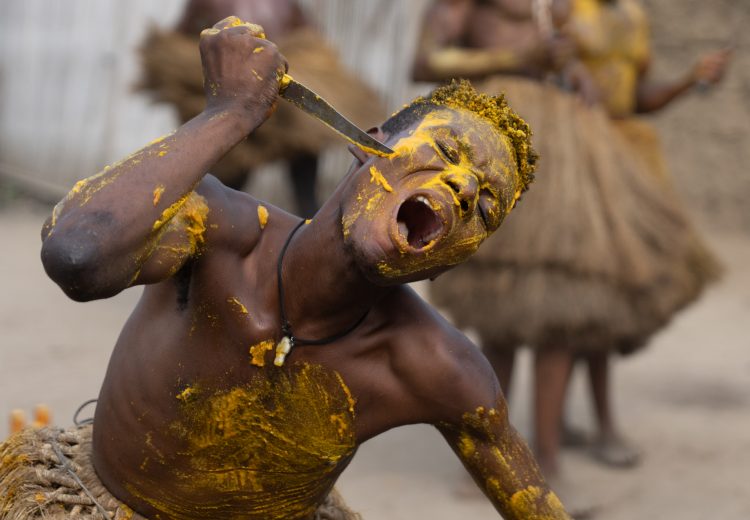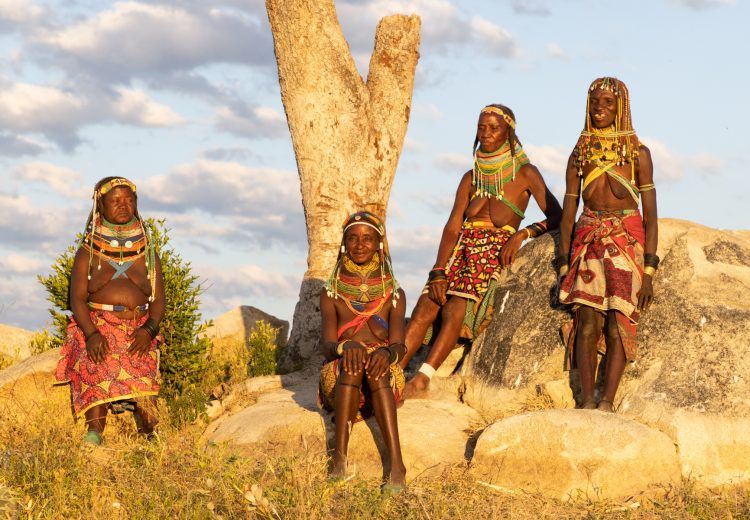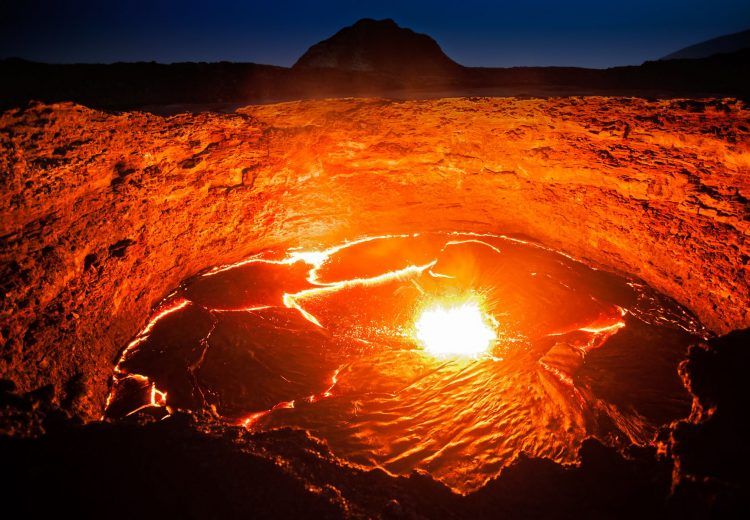Chad
CHAD: THE GEREWOL, LAKE CHAD AND MORE – Africa’s Last True Nomads







































































The ancient palace at Gaoui is the oldest building in Chad (image by Inger Vandyke)

African people don't travel, they move. On the road in remote Chad (image by Inger Vandyke)

Young Wodaabe men gather in the shade before they celebrate the Gerewol Festival (image by Inger Vandyke)

Excited young Wodaabe girls leave their cattle behind to come and greet us (image by Inger Vandyke)

The smiling face of a Wodaabe gent attending the Gerewol festival (image by Inger Vandyke)

Smile practice for the Gerewol (image by Inger Vandyke)

A typical Saharan scene crossing the desert in Chad (Image by Inger Vandyke)

Young Wodaabe men singing at the Gerewol Festival. The only way to describe them is beautiful (image by Inger Vandyke)

A beautiful Wodaabe girl with her facial tattoos and scarification (image by Inger Vandyke)

A Wodaabe boy sits atop his deconstructed home on a cow while he rides with 'migrating' Wodaabe families (image by Inger Vandyke)

Wodaabe children are introduced to the spectacle of the Gerewol at a very young age (image by Inger Vandyke)

A young Wodaabe man at the Gerewol (image by Inger Vandyke)

A small group of Wodaabe men dancing at the Gerewol (image by Inger Vandyke)

Occasionally older Wodaabe men join in the dance of the younger guys at the Gerewol (image by Inger Vandyke)

Inside the museum at Gaoui (image by Inger Vandyke)

Shuwa Arabe people coming into N'Djamena on donkeys to sell firewood at a market (image by Inger Vandyke)

A stunning Wodaabe young man in blue (image by Inger Vandyke)

Detail of the beautiful ceremony tunics worn by young Wodaabe men at the Gerewol (image by Inger Vandyke)

A group of young Wodaabe men singing at the Gerewol festival (image by Inger Vandyke)

Smiling Wodaabe young man at the Gerewol (image by Inger Vandyke)

Refining the art of facial expressions for the Gerewol (image by Inger Vandyke)

Typical Wodaabe family at home in southern Chad (image by Inger Vandyke)

A trio of young Wodaabe men performing at the Gerewol (image by Inger Vandyke)

Arabe nomads on the move with their belongings stored atop decorated camels (stock image)

A beautiful Wodaabe lady with her many facial tattoos (image by Inger Vandyke)

Portrait of a shy young Wodaabe boy (image by Inger Vandyke)


A trio of Wodaabe boys walk towards the dance arena of the Gerewol Festival (image by Inger Vandyke)

Young Wodaabe girls also get into the spirit of the Gerewol and pull faces (image by Inger Vandyke)

Young Wodaabe men help each other to prepare for the Gerewol (image by Inger Vandyke)

The henna tattooed hands of a local Chadian girl in western Chad (Image by Inger Vandyke)

A Fulani lady selling goat's milk at Karnak in remote Chad (image by Inger Vandyke)

A Kuri cow with its gigantic hollow horns. These gentle cows are kept in herds by the Buduma water nomads of Lake Chad (stock image)

A beautiful Wodaabe boy with his face half-painted in preparation for the Gerewol (image by Inger Vandyke)

Gerewol grin (image by Inger Vandyke)

Beautiful beaded and aluminium bracelets worn by Wodaabe girls at the Gerewol (image by Inger Vandyke)

Wodaabe are a sub-clan of the larger Fulani group of people. This handmade hat is typically worn by Fulani men (image by Inger Vandyke)

Wodaabe men celebrate the Gerewol well into the night (image by Inger Vandyke)

A mirror view of a young Wodaabe man (image by Inger Vandyke)

The Gerewol Festival attracts Wodaabe men from Chad and Nigeria in southern Chad. Portrait of a Nigerian Wodaabe who came to watch the dancing with us (image by Inger Vandyke)

The Gerewol in Sepia (image by Inger Vandyke)

Young Wodaabe boys gather to watch young Wodaabe men prepare for the Gerewol, a time of much excitement for everyone (image by Inger Vandyke)

Strong facial expressions are seen as a highly attractive feature of Wodaabe men (image by Inger Vandyke)

Preparing for the Gerewol (image by Inger Vandyke)

A Wodaabe family preparing dinner at their Wuro, or nomadic home (image by Inger Vandyke)

The incredible Gerewol Ceremony (image by Inger Vandyke)

A family of Kotoko potters in Gaoui (image by Inger Vandyke)

Gerewol dancers (image by Inger Vandyke)

Some young Wodaabe men are so stunning they almost look like Queen Nefertiti of Egypt (image by Inger Vandyke)

Drone view of the Gerewol (image by Inger Vandyke)

Smiling Wodaabe mother and baby riding a donkey with their household goods on the backs of cows (image by Inger Vandyke)

At dusk a beautiful Wodaabe girl joins the throngs of young women there to assess the attractiveness of young Wodaabe men (image by Inger Vandyke)

Applying makeup is also a good opportunity to try out new facial expressions to prepare for the Gerewol (image by Inger Vandyke)

The grasslands of Chad are home to many nomadic tribal people (Image by Inger Vandyke)

Portrait of a young boy in the Sahara of Chad (Image by Inger Vandyke)

The ancient palace of Gaoui is the oldest building in Chad (image by Inger Vandyke)

Shooting through the group of dancers to a solo Wodaabe young man taking a break in the Gerewol (image by Inger Vandyke)

Portrait of a Kotoko girl in Gaoui, Chad (image by Inger Vandyke)


A colourful nomadic camp in the grasslands of Chad (Image by Inger Vandyke)

Creating portraits while Wodaabe men dance at night is not impossible but it is difficult! (image by Inger Vandyke)

Portrait of a beautiful Chadian Fulani girl (Image by Inger Vandyke)

Wodaabe nomad women on the move with their cows (image by Inger Vandyke)

Portrait of a beautiful Fulani girl in Karnak, remote Chad (image by Inger Vandyke)

A Kotoko man demonstrating how men fish on the Chari river (image by Inger Vandyke)

The grasslands of Chad are vast, uninhabited, isolated and extraordinarily beautiful (Image by Inger Vandyke)

Young Wodaabe girls outside their Wuro (family home) in remote southern Chad (image by Inger Vandyke)

A Wodaabe elder claps to guide the young men performing at the Gerewol (image by Inger Vandyke)

A young Chadian boy walks through a desert town of Saharan Chad (Image by Inger Vandyke)
|
Wednesday 7th October –
Friday 23rd October 2026 Leader: Inger Vandyke |
17 Days | Group Size Limit 7 |
CHAD PHOTOGRAPHY TOURS WITH WILD IMAGES: OVERVIEW
Wild Images’ Chad Photography Tours explore the vast and rarely-visited country of Chad, home to some of the Sahara’s most spectacular geography and tribal people. Completely landlocked, Chad lies at the very geographical centre of the African continent and is the 20th largest country in the world.
In 2017 Wild Images pioneered photography expeditions in remote Chad. This wild and untouched centre of Africa has since become one of our most favourite countries in Africa due to its remote, frontier-like feel and adventurous travel experience.
The 2026 expedition is the first ever photography tour that comprehensively explores the nomadic people of Chad including the water nomads (Buduma) of Lake Chad, the caravans of Shuwa Arabe nomads in the spectacular Abtouyour Mountains, and the beautiful Kanoumoudji and Wodaabe peoples of southern Chad.
We will also visit the stunning village of Gaoui, home to the Kotoko people, their beautiful ceramic arts and the oldest building in Chad which was the seat of the ancient Sao Empire.
LAND OF NOMADS
Roaming the entire country are tribes of Chadian people, including the Sara and Ngambaye people who are instantly recognisable by their elaborate facial scars, the Toubou nomads of the Ennedi region and the beautiful Wodaabe or Mbororo people, a statuesque sub-culture of the Fulani people, one of the largest nomadic tribes in the world.
Elsewhere in Africa, many nomadic people have had to curb their way of life due to political issues, climate change and their economic situations. In Chad many of these people still roam as they have done for centuries, taking their worldly belongings on camels and cows, on foot across the country.
We will explore three core areas of nomadic people on this tour – the little visited Lake Chad and Hadjer el Hamis (Elephant Rock) in Western Chad, the stunning Abtouyour Mountains of Eastern Chad and finally the savannahs of Southern Chad where the beautiful Kanoumoudji and Wodaabe clans of Fulani people roam between Chad, Cameroon and Niger.
GAOUI
Just a short drive out of N’Djamena, the historic village of Gaoui is the home of the Kotoko people and a former seat of the Sao Empire in Chad. The village radiates out from the Palace of Gaoui, a stunning Sino-Sahelian mud palace that is restored annually by skilled tradesmen committed to keeping this beautiful and ancient building intact. We will visit the tiny museum adjacent to the palace to learn about Kotoko culture and the curious way in which they fish the Chari River, before taking a walk in the tiny alleyways of Gaoui meeting local ceramic artesans.
HADJER AL HAMIS (ELEPHANT ROCK)
Situated close to the borders of Chad with Nigeria, Niger and Cameroon, Lake Chad is a vast freshwater lake that is one of Africa’s most important wetlands.
Our journey to Lake Chad at the start of the expedition will first visit the spectacular semi-circular rock formations of Hadjer Al Hamis, or Elephant Rock. These soaring granitic kopjes rise out of their flat environment like sentinels remaining from a time when this part of Africa was more volcanic.
Lying in the Chad Basin, slightly east of Lake Chad, these dramatic butte style mountains represented islands of the lake before the waters receded due to climate change and mismanaged water use.
Now the Hadjer al Hamis peaks are home to a small number of Tantalus Monkeys and also a curious rock cave locally known as the “Lion’s Yawn”.
BUDUMA – THE WATER NOMADS OF LAKE CHAD
From Hadjer al Hamis we will travel out to Lake Chad to meet the Buduma water nomads who have lived their lives moving between wet (floating) villages and camps on dry land for centuries. The Buduma make extensive use of papyrus reeds which they use for constructing fishing boats, lightweight huts (that can be moved to higher ground if the lake rises). When they are not living on the more stable islands of Lake Chad in permanent villages enclosed by reed fences, during the dry season, all able-bodied Buduma move to floating islands to establish temporary camps. These islands are really floating rafts of matted vegetation, sometimes drifting and sometimes anchored by roots.
Ethnically related to the Kanem people of Chad, the Buduma are well known for their beautiful large Kuri cows which they use mainly for milk and are rarely eaten. Their close relationship with their gentle and large cows is very similar to that of the Mundari and Dinka people’s relationship to the Ankole Watusi cows of South Sudan.
With a diet of mostly cows milk and fish the Buduma grow to have very powerful physiques and they are incredibly good swimmers who are capable of holding their breath for long periods of time while they fish and gather water lily bulbs for food. The latter are actually dried and ground into a flour-like substance which is a staple part of the diet of Buduma people.
The Buduma are very strict about keeping their culture alive and they rarely intermarry. A Buduma man may leave the lake to take a Kanem wife but Buduma women are forbidden to find a husband the same way.
Statuesque and beautiful, the Buduma practice facial scarification in the form of three vertical lines down each cheek, making them instantly recognisable when you meet them.
Although the Buduma were once feared as warriors with aggressive reputations, today they are a peaceful and friendly people willing to adopt some modern changes and greet guests from outside who are intrepid enough to explore Lake Chad. Although their neighbours call them Buduma, meaning “people of the grass (or reeds)”, they prefer to be called Yedina.
AFRICA’S NORTHERN-MOST ELEPHANTS
While we are travelling around Lake Chad, with luck we might encounter one of the breeding herds of elephants who still roam the wilds of the lake and its islands.
This unique elephant population of the arid Sahelian-Saharan zone on the eastern shore of Lake Chad is one of the northern-most populations in Africa.
These herds have always lived in close proximity to people and as such, are quite relaxed which means they have probably never been heavily poached. Right now they are subject to an extensive conservation program run by African Parks who have collared individuals living in Lake Chad in order to monitor their movements.
If we encounter a herd on our days in Lake Chad, they will be a definite highlight of this section of our expedition.
THE ARABE NOMADS OF THE ABTOUYOUR MOUNTAINS
The second stage of our expedition will go east of N’Djamena to explore the incredible Abtouyour Mountains in the region of Guera.
It is here that settled communities of Guera people live in beautiful villages characterised by stone houses with spiralling and layered thatch roofs.
Dramatic and gigantic, we will be visiting the Abtouyour Mountains at a time when families of Arabe nomads are on the move searching for better grazing pastures for their livestock. Travelling in caravans with most of their possessions loaded onto camels we will camp alongside Arabe families while we explore this stunning region of Chad.
Arabe women are particularly beautiful with fine bones and extremely long hair. In the rocky mountains of Chad’s Guéra region, a native plant with rust-hued flower buds called croton gratissimus, known as Chébé, grows in abundance and Arabe women harvest this plant to mix with shea butter which they use to fashion their hair in tight braids and grow in lengths to their hips! This, along with their beautiful ear and nose ring jewellery, gives them an almost fairytale like beauty.
The Arabe are how you imagine storybook nomads to be. When they move their camels are not only elaborately decorated but each has a large box-like frame adorned with brocades that sits neatly on the camel’s back. This is where the elderly, the extremely young and even baby animals are carried. Surrounding them are the family members who are fit enough to migrate on foot plus their other livestock including goats, sheep and cows.
KANOUMOUDJI
On the final leg of our expedition we will travel south of N’Djamena firstly to meet the colourful Kanoumoudji clan of Fulani people living east of the Chari River.
This beautiful clan of the Fulani people are instantly recognised when you see Kanoumoudji women who choose brightly coloured dresses, black head scarves and large hoop earrings as their preferred adornments.
THE GEREWOL FESTIVAL
Perhaps the most well known and spectacular Fulani people in Chad are the nomadic Wodaabe (or Mbororo) people of southern Chad. Dividing their lives between the countries of Chad, Niger, Nigeria and Cameroon, the Wodaabe people are at once friendly and incredibly beautiful.
The Wodaabe speak a dialect of the Fulani language that has never been written down. They roam the desert expanses of the Sahel and Sahara with their large herds of Zebu cattle, following the rains, which bring much-needed grazing grasses to life in this remote, arid part of Africa. Groups of several dozen relatives, typically several brothers with their wives, children and elders, travel on foot, donkey or camel, and stay at each grazing spot for a few days. A large wooden bed is the most important possession of each family. The women also carry calabashes as a status symbol. These calabashes are passed down through the generations and often provoke rivalry between women. The Wodaabe mostly live on milk and ground millet, as well as yoghurt, sweet tea and occasionally the meat of a goat or sheep.
Each year at the end of the rainy season, these remarkable people meet in the grasslands of southern Chad to hold the spectacular Gerewol Festival. The Wodaabe clans come together for the Gerewol, a festival of no fixed dates and indeed a celebration that, in Chad, lasts for a period of 5-6 weeks.
During the Gerewol, there are a series of barters over marriage and contests where each young man’s beauty and skills are judged by the young women. Here the young Wodaabe men, with elaborate make-up, feathers and other adornments, perform the Yaake and other dances and sing songs to impress marriageable women. The male beauty ideal of the Wodaabe stresses tallness, white eyes and teeth, so the men will often roll their eyes and show their teeth to emphasise these characteristics.
Over the course of the last three days of the expedition, we will visit numerous festival events to photograph the participants of the festival, both in their camps as they wait for each event to happen and during the events. We may also be able to photograph the festival participants preparing their costumes and make-up for these unique and spectacular celebrations.
Returning from the Gerewol Festival to N’Djamena, we will have a night to rest at a comfortable hotel before our tour ends the following day after lunch.
IMPORTANT NOTE: The dates of our expedition are provisional. As the Gerewol dates are not fixed in advance, the dates of this tour may vary up to five days either side of the start and end dates. We should be able to confirm the exact tour dates by early 2026.
Accommodation & Road Transport
The hotel we use in N’Djamena is a good standard.We have timed the expedition to have a hotel night in N’Djamena after each expedition section.
In the more remote regions of Lake Chad, the Abtouyour Mountains and Dourbali we will stay in very simple camps. There will be 2-man tents (but each person can have their own tent: couples may prefer to use one tent for luggage) with mattresses on the ground and a dining table with chairs. All meals will be provided and cooked by our support staff. A toilet tent and a shower tent will be provided.
The transport for the Chad expedition will be by 4×4 vehicles. Roads in Chad are only reasonable in the cities, the few tarred highways are usually dotted with potholes. For much of our journey, we will be on dirt roads or tracks.
Walking
The walking effort during our Chad photography expedition is relatively easy almost throughout.
Climate
Typically it will be warm to hot, dry and sunny (early mornings are sometimes cooler) in the parts of Chad being visited.
Photographic Equipment
This trip is mainly a combination of people and landscape photography.
For photography with the people of Chad, we recommend a travel lens such as a 24-105mm on a DSLR or mirrorless camera, or a point-and-shoot camera, or even iPhones and iPads. On occasion, you may wish to use a telephoto lens of the order of 200-300mm.
For landscape and night photography we suggest you bring a wide-angle lens plus a tripod.
If you use a DSLR or an equivalent mirror-less camera for photography on this trip you should aim to cover focal lengths of between 15-300mm, with or without converters. (If your budget does not run to prime lenses, a high-quality 100-400mm or similar zoom with or without a 1.4x converter can be a great alternative.)
Alternatively, you can get wonderful results in Chad with a high-quality digital bridge camera with an 18-20x or higher optical zoom.
If you have questions about what equipment you ought to bring, please contact our office.
Photographic Highlights
- The first photography tour to explore remote Lake Chad and the Abtouyour Mountains
- Spend time with the spectacular Wodaabe (Mbororo) Fulani people at the Gerewol Festival
- Visit the otherworldly rock formations of Hadjer al Hamis (Elephant Rock) with its resident troupe of Tantalus Monkeys
- Possible encounters with the elephants of Lake Chad, the northern-most population of African elephants
- Journey through the spectacular Abtouyour Mountains of eastern Chad with their soaring granite peaks and pretty Guera villages
- Meet the Buduma, the water nomads of Lake Chad who live closely alongside their giant Kuri Cows
- Travel with Arabe nomads and their decorated camels through the Abtouyour Mountains
- Visit the colourful and little-known Kanoumoudji clan of Fulani people
- Camp close to nomadic families to learn about and photograph their way of life
- A true adventure with a highly experienced team in the Chadian wilderness
OUTLINE ITINERARY
- Day 1: Afternoon tour start at N'Djamena.
- Day 2: Morning visit to Gaoui, the ancient centre of the Sao Empire and its ceramic artesans
- Days 3-5: Drive north to Elephant Rock and Lake Chad. Overnight with the Boudouma water nomads of Lake Chad
- Day 6: Return to N'Djamena
- Days 7-10: Drive to the Abtouyour Mountains in the region of Guera to meet nomadic Arabe families
- Day 11: Return to N'Djamena
- Day 12: Drive to southern Chad and meet with Kanoumoudji nomads
- Days 13-15: The spectacular Gerewol Festival with Wodaabe (Mbororo) nomads
- Day 16: Return to N'Djamena
- Day 17: Tour end
To see a larger map, click on the square-like ‘enlarge’ icon in the upper right of the map box.
To see (or hide) the ‘map legend’, click on the icon with an arrow in the upper left of the map box.
To change to a satellite view, which is great for seeing the physical terrain (and for seeing really fine details by repetitive use of the + button), click on the square ‘map view’ icon in the lower left corner of the ‘map legend’.
PRICE INFORMATION
Wild Images Inclusions: Our tour prices include surface transportation, accommodations, meals and entrance fees.
Our tour prices also include all tips for local guides, drivers, camp staff, accommodation/restaurant staff. Also included are payments to local people who are willing to be photographed.
Deposit: 20% of the total tour price. Our office will let you know what deposit amount is due, in order to confirm your booking, following receipt of your online booking form.
TO BOOK THIS TOUR: Click here (you will need the tour dates)
2026: provisional €8870, $9290, £7290, AUD14770. N’Djamena/N’Djamena.
Single Supplement: 2026: €320, $340, £260, AUD540.
The single supplement includes a single occupancy tent while camping.
This tour is priced in US Dollars. Amounts shown in other currencies are indicative.
Air Travel To & From The Tour: Our in-house IATA ticket agency will be pleased to arrange your air travel on request, or you may arrange this yourself if you prefer.
CHAD PHOTOGRAPHY TOUR: DETAILED ITINERARY
Day 1
The Wild Images Chad photography expedition begins this afternoon at our hotel in N’Djamena, the capital city of Chad. Over a welcome dinner, we will enjoy getting to know the group and our leader will brief our guests about the expedition in more detail.
An airport transfer will be provided.
Day 2
The Wild mages Chad photography tour begins this morning with a visit to the village of Gaoui on N’Djamena’s outskirts. This ancient town is home to the oldest building in Chad, the Palace of Gaoui, which has foundations dating back to the Sao Empire. After we have visited the palace and the museum, we will go on a small walking tour of the alleyways that radiate out into the village from the palace. These alleyways are home to Kotoko ceramic artists and we will visit their earth kilns, workshops and community artesans for the rest of the morning.
A restful afternoon at our hotel will allow us some time to finalise our travel permits, ensure the support vehicles are well stocked and our batteries are charged before we leave the bustle of the city behind to start our expedition.
Days 3-5
We will pack up our four-wheel-drive vehicles and drive from N’Djamena to Hadjer el Hamis (Elephant Rock) with its resident troupe of Tantalus Monkeys.
As we leave the city fringes, rural Chad will unfold before our eyes and the landscape will change to the desert expanses surrounding Lake Chad. Hadjer el Hamis is almost like an island in this vast landscape but is a worthy stop before we head to Lake Chad where we will spend the next few days living alongside and photographing the incredible Buduma water nomads of the lake with their large Kuri cattle.
Over the course of our days in Lake Chad we hope to visit a number of Buduma communities to photograph their unique water and cattle dependent lifestyle while we learn about how they survive in the massive freshwater wetlands of Lake Chad
Day 6
After a final sunrise on Lake Chad we will pack up our expedition vehicles and drive back to N’Djamena for an overnight stay to rest and recharge before the next leg of our expedition.
Days 7-9
From N’Djamena we will travel eastward towards the spectacular Abtouyour Mountains where we will spend the next three days exploring the villages of the Guera people and travelling alongside Arabe nomads who should be on the move through these stunning peaks and valleys.
Day 10
Today we will once again travel back to N’Djamena to rest for one night before we start our journey south to visit the Gerewol
Days 11-14
On our final leg of the expedition we will travel south to visit the pretty Kanoumoudji clan of Fulani people before we travel further to meet the Wodaabe.
Over the following three full days, we will explore the area around Dourbali, visiting marketplaces and observing traditions that have been practised by the Wodaabe for centuries. In this rich region of Chad, the grazing grounds provide valuable nutrition for livestock. A higher-than-average salt content also aids in the treatment of parasites in cattle.
The Wodaabe settle here to organize important tribal gatherings, feasts and markets in the annual celebration of the Gerewol Festival. This important feast is important to the Wodaabe, many of whom have travelled huge distances to gather here.
This carefully planned event is complex and fascinating. At the top levels of organisation are the elders. They are the ones who urge and advise younger participants on the ways to celebrate and attract a mate.
Wodaabe men use this important celebration to exchange news, make friends and have love affairs. Some of these affairs may lead to marriage, but this is never an obligation. Participants are free to choose. Women may choose to spend a night with a man or select a husband at the festival. For the men, it is those with the brightest smiles and most elaborate dances that generally win the most beautiful girls.
We will spend our time camped amongst the Wodaabe people, joining them for spontaneous parties, watching them prepare for dances and learning about their cult of beauty which is a cornerstone of Wodaabe life. Their joyful creativity and knack for disguise are unrivalled in the people of the Sahel and these extraordinary days will allow us to be completely immersed in their nomadic world.
Day 15
After our last few hours around the Wodaabe people, we will drive back to N’Djamena in time for a farewell dinner at our hotel to celebrate our amazing expedition.
Day 16
Our tour will end after breakfast and with a transfer to the international airport
Chad: Secrets of the Undiscovered Sahara Expedition Tour Report 2023
Chad. This hidden gem of Africa lies deep in the continent’s heart with the centremost point lying in the town of Sarh, in southern Chad. Completely landlocked, Chad is not only one of the largest countries in Africa, it is the 20th largest country in the world. Travelling from south to north in the country, […]
View Report
Other Wild Images Tours for People Photography
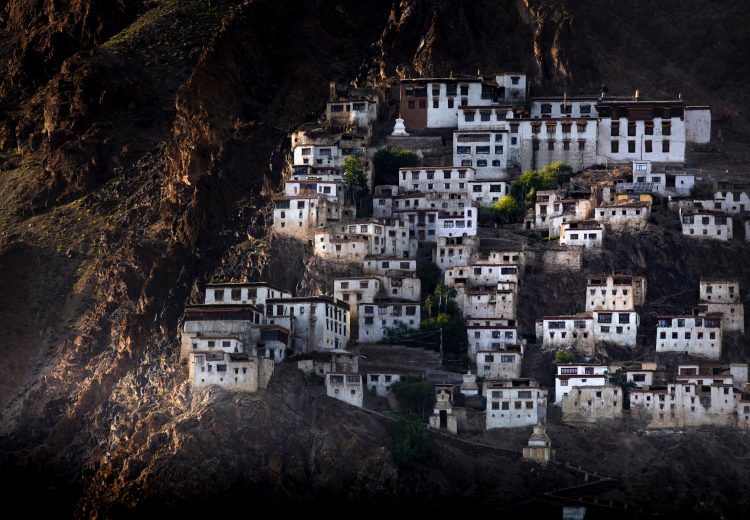
India
September-October 2025
ZANSKAR: A REMOTE BUDDHIST WORLD – Exploring the most isolated valley of the Indian Himalayas
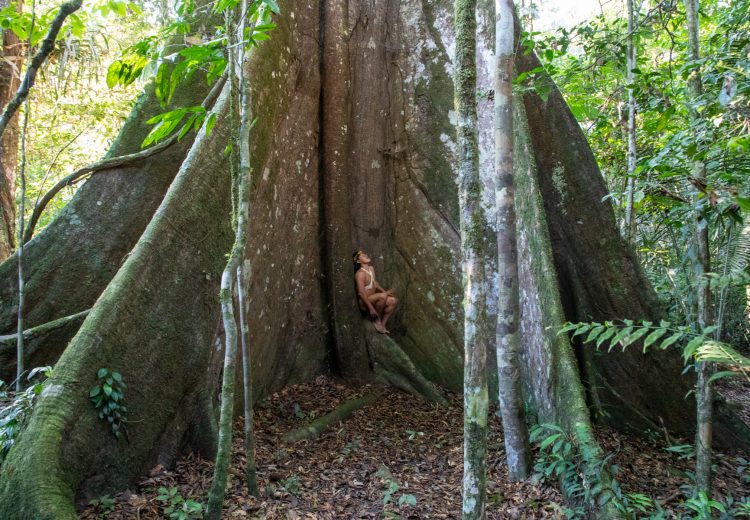
South America (including Galapagos)
July 2026
ECUADOR’S WAORANI: Among the last Hunter Gatherers of the Amazon
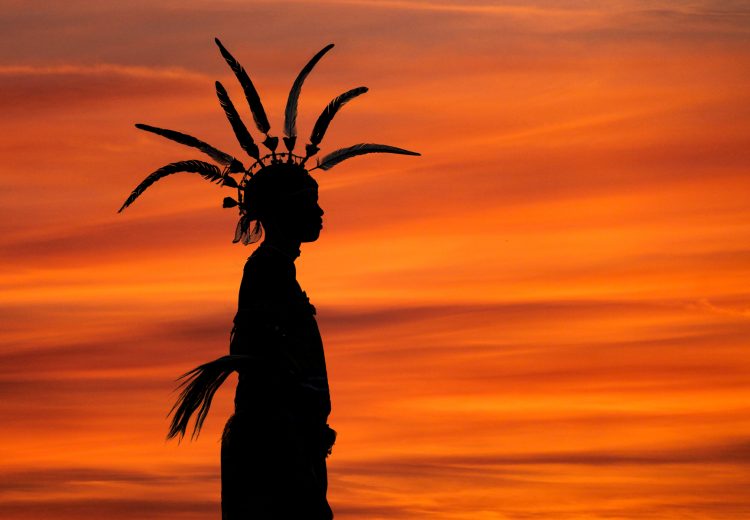
Kenya
August-September 2026
REMOTE KENYA: Tribes of Lake Turkana, the Chalbi Desert, the Ndoto Mountains and Samburu
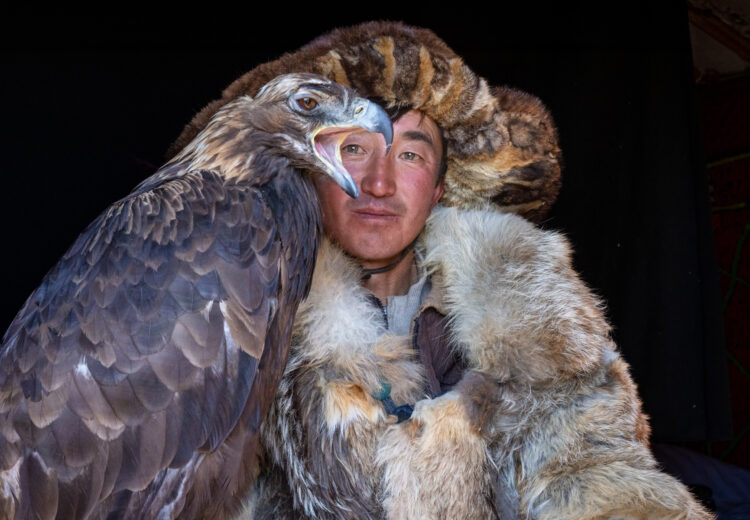
Mongolia
September 2026
EAGLE HUNTERS OF WESTERN MONGOLIA: Including the Altai Kazakh Eagle Festival at Sagsai
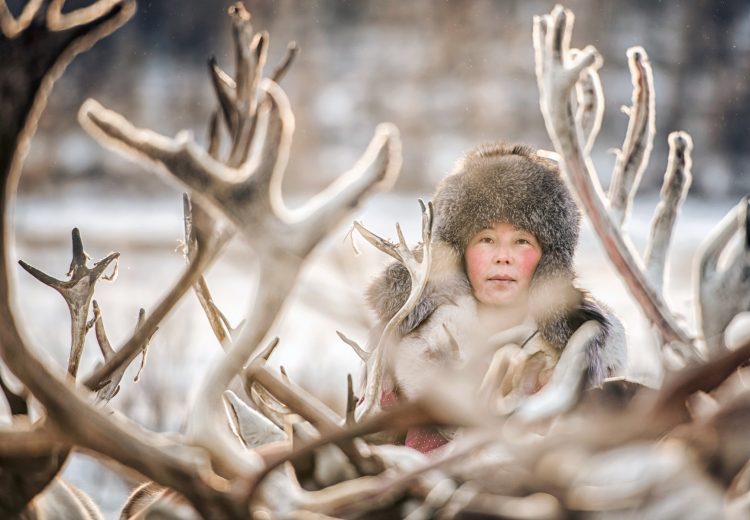
Mongolia
September-October 2027








